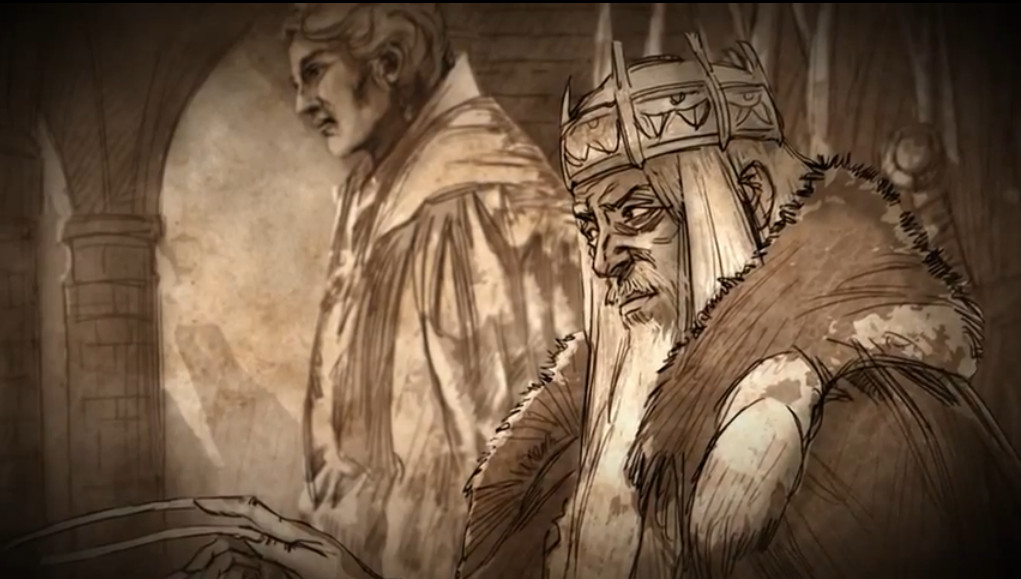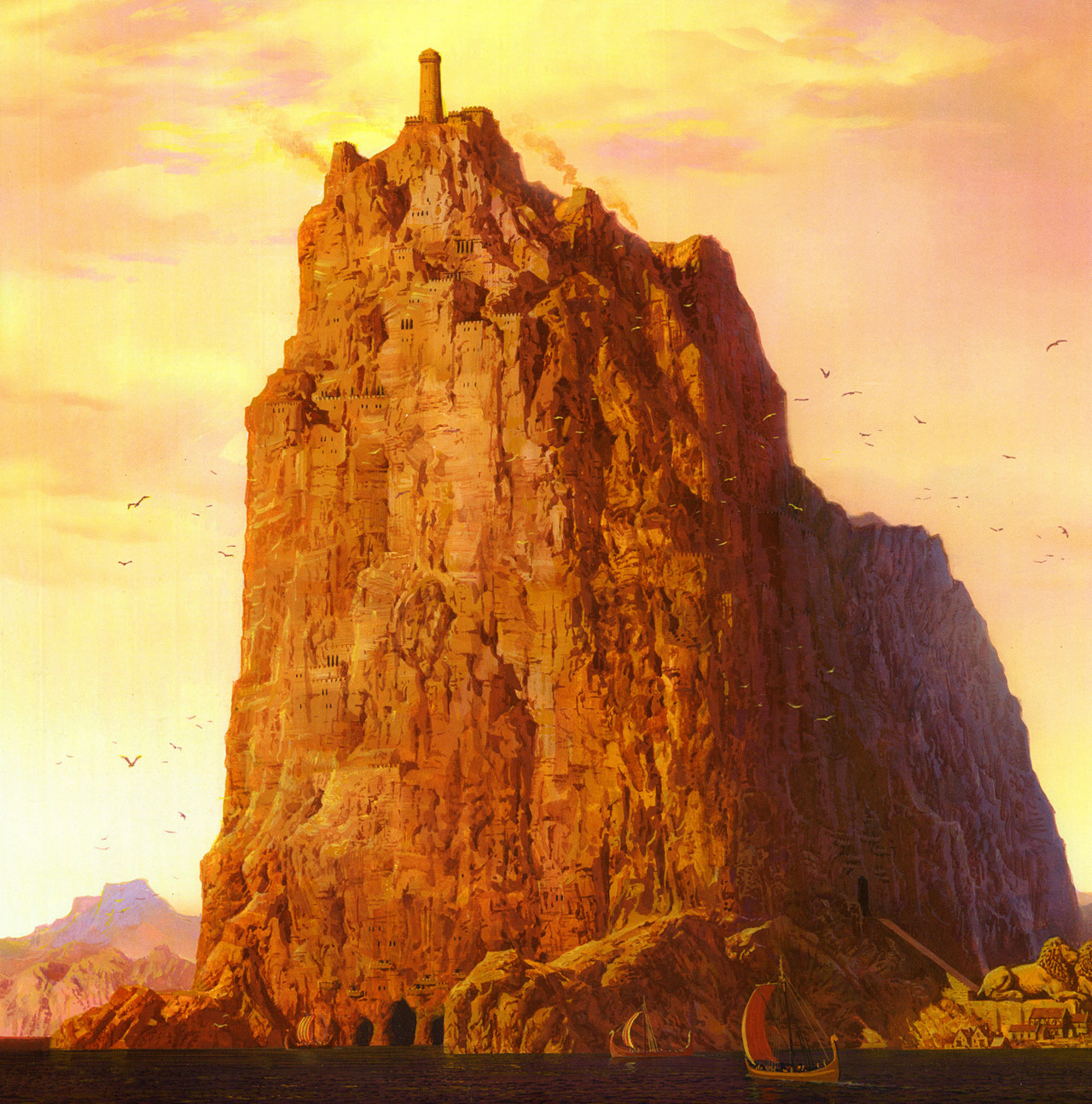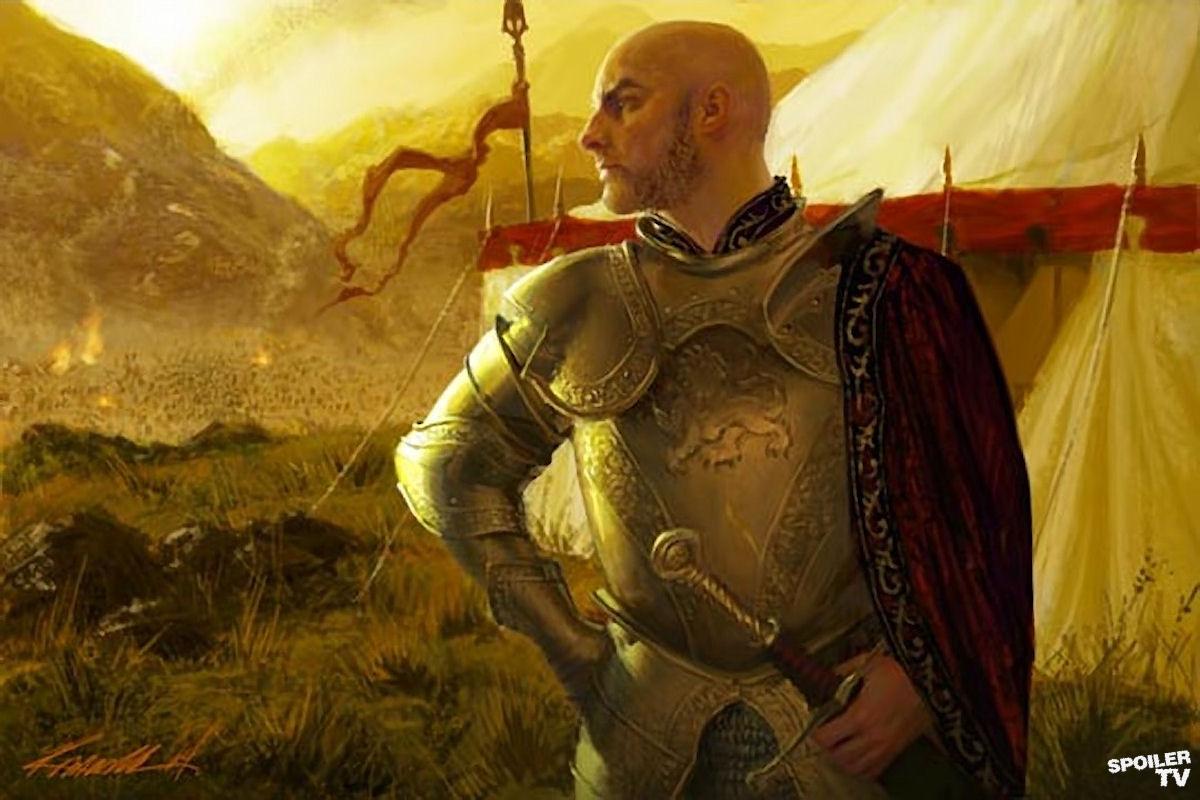
          |
WORLD OF ICE AND FIRE SAMPLEApril 17, 2014
Copyright c 2015 by George R.R. Martin. An abridged version of this history appeared in The World of Ice & Fire, copyright 2014 George R.R. Martin. The Westerlands
The westerlands are a place of rugged hills and rolling plains, of misty dales and craggy shorelines, a place of blue lakes and sparkling rivers and fertile fields, of broadleaf forests that teem with game of every sort, where half-hidden doors in the sides of wooded hills open onto labyrinthine caves that wend their way through darkness to reveal unimaginable wonders and vast treasures deep beneath the earth. These are rich lands, temperate and fruitful, shielded by high hills to the east and south and the endless blue waters of the Sunset Sea to the west. Men came here in the Dawn Age, it is said, but before them the children of the forest made their homes in the woods, whilst giants dwelled amongst the hills, where their bones can still occasionally be found. Neither of these elder races proved able to withstand the First Men, who came with fire and bronze axes to cut down the forests, plough the fields, and drive roads through the hill country where the giants made their abodes. Legends tell us that the fighting was bitter in those days, and many a hero suffered a cruel death at the hands of these ancient foes. Yet still the men kept coming, until their farms and villages spread across the west “from salt to stone,” protected by stout motte-and-bailey forts, and later great stone castles, until the giants were no more, and the children of the forest vanished into the deep woods, the hollow hills, and the far north. Many and more great houses trace their roots back to this golden age of the First Men. Amongst these are the Hawthornes, the Footes, the Brooms, and the Plumms. On Fair Isle, the longships of the Farmans helped defend the western coast against ironborn reavers. The Greenfields raised a vast timber castle called the Bower (now simply Greenfield), built entirely of weirwood. The Reynes of Castamere made a rich system of mines, caves, and tunnels their own subterranean seat, whilst the Westerlings built the Crag above the waves. Other houses sprang from the loins of legendary heroes, of whom tales are told to this very day; the Crakehalls from Crake the Boarkiller, the Baneforts from the Hooded Man, the Yews from the Blind Bowman Alan o’ the Oak, the Morelands from Pate the Ploughman.
Each of these families became powers, and some in time took on the styles of lords and even kings. Yet by far the greatest lords in the westerlands were the Casterlys of the Rock, who had their seat in a colossal stone that rose beside the Sunset Sea. Legend tells us the first Casterly lord was a huntsman, Corlos son of Caster, who lived in a village near to where Lannisport stands today. When a lion began preying upon the village’s sheep, Corlos tracked it back to its den, a cave in the base of the Rock. Armed only with a spear, he slew the lion and his mate, but spared her new-born cubs, an act of mercy that so pleased the old gods (for this was long before the Seven came to Westeros) that they sent a sudden shaft of sunlight deep into the cave, and there in the stony walls Corlos beheld the gleam of yellow gold, a vein as thick as a man’s waist. The truth of that tale is lost in the mists of time, but we cannot doubt that Corlos, or some progenitor of what would become House Casterly, found gold inside the Rock and soon began to mine there. To defend his treasure against those would make off with it, he moved inside the cave and fortified its entrance. As years and centuries passed, his descendants delved deeper and deeper into the earth, following the color, whilst carving halls and galleries and stairways and tunnels into the Rock itself, transforming the gigantic stone into a mighty fastness that dwarfed every castle in Westeros. Though never kings, the Casterlys became the richest lords in all of Westeros, and the greatest power in the westerlands, and remained so for hundreds of years. By then the Dawn Age had given way to the Age of Heroes. That was when the golden-haired rogue called Lann the Clever appeared from out of the east. Some say he was an Andal adventurer from across the narrow sea, though this was millennia before the coming of the Andals to Westeros. Regardless of his origins, the tales agree that somehow Lann the Clever winkled the Casterlys out of their Rock, and took it for his own.
The precise method by which he accomplished this remains a matter of conjecture. In the most common version of the tale, Lann discovered a secret way inside the Rock, a cleft so narrow that he had to strip off his clothes and coat himself with butter to squeeze through. Once inside, he began to work his mischief, whispering threats in the ears of sleeping Casterlys, howling from the darkness like a demon, stealing treasures from one brother to plant in the bedchamber of another, rigging sundry snares and deadfalls. By such methods he set the Casterlys at odds with one another, and convinced them that the Rock was haunted by some fell creature that would never let them live in peace. Other tellers prefer other versions of the tale. In one, Lann uses the cleft to the fill the Rock with mice, rats, and other vermin, thereby driving out the Casterlys. In another, he smuggles a pride of lions inside, and Lord Casterly and his sons are all devoured, whereby Lann claims his lordship’s wife and daughters for himself. The bawdiest of the stories has Lann stealing in night after night to have his way with the Casterly maidens whilst they slept. In nine months time, the maids thus deflowered gave birth to golden-haired children, whilst still insisting they had never had carnal knowledge of a man. The last tale, ribald as it is, has certain intriguing aspects that may hint at the truth of what occurred. It is Archmaester Perestan’s belief that Lann was a retainer of some sort in service to Lord Casterly (perhaps a household knight), who impregnated his lordship’s daughter (or daughters, though that seems less likely), and persuaded her father to give him the girl’s hand in marriage. If indeed this was what occurred, assuming (as we must) that Lord Casterly had no trueborn sons, then in the natural course of events the Rock would have passed to the daughter, and hence to Lann, upon the father’s death. There is, to be sure, no more historical evidence for this than for any of the other versions. Though it must be admitted that Perestan makes a persuasive case in his Consideration of History, it is doubtful that the singers and storytellers will ever be convinced, for it is far more droll to believe that Lann won the Rock with lions, mice, or demons than by marriage. All that is known for certain is that sometime during the Age of Heroes, the Casterlys vanish from the chronicles, and the hitherto-unknown Lannisters appear in their place, ruling large portions of the westerlands from beneath Casterly Rock. Lann the Clever supposedly lived to the age of three hundred and twelve, and sired a hundred bold sons and a hundred lissome daughters, all fair of face, clean of limb, and blessed with hair “as golden as the sun.” The names of the mothers of this vast brood are not recorded, but if they were indeed all born of Lord Casterly’s daughter, she must have died a most exhausted woman. Such tales aside, the histories suggest that the early Lannisters were fertile as well as fair, for many names began to appear in the chronicles, and within a few generations Lann’s descendants had grown so numerous that even Casterly Rock could not contain all of them. Rather than tunnel out new passages in the stone, some sons and daughters from lesser branches of the House left to make their homes in a village a scant mile away. The land was fertile, the sea teemed with fish, and the site they had chosen had an excellent natural harbor. Soon enough the village grew into a town, and then a city: Lannisport. By the time the Andals came to Westeros, Lannisport had become the second city of Westeros. Only Oldtown was larger and richer, and trading ships from every corner of the world were sailing up the western coasts to call upon “golden city on the Sunset Sea.” Gold had made House Lannister rich; trade would make them even richer. The Lannisters of Lannisport prospered, and built great walls around their city to defend it from those who sought to steal their wealth (chiefly ironborn). The Lannisters of Casterly Rock became kings.
Lann the Clever never called himself a king, as best we know, though some tales told centuries later have conferred that style on him posthumously. The first true Lannister king we know of is Loreon Lannister, also known as Loreon the Lion (a number of Lannisters through the centuries have been dubbed ‘the Lion’ or ‘the Golden,’ for understandable reasons), who made the Reynes of Castamere his vassals by wedding a daughter of that House, and defeated the Hooded King, Morgon Banefort, and his thralls in a war that lasted twenty years. King Morgon was supposedly a necromancer of terrible power, and it is written that as he lay dying, he told the Lannisters who had slain him (amongst them three of Loreon’s own sons) that he would return from the grave to wreak vengeance upon them one and all. To prevent that, Loreon had Morgon’s body hacked into a hundred pieces and fed to his lions. In a grisly aftermath, however, those selfsame lions broke loose two years later in the bowels of Casterly Rock, and slew the king’s sons, just as the Hooded King had promised. Loreon was the first Lannister to style himself King of the Rock, a title his sons and grandsons and their successors would continue to bear for thousands of years, until King Loren I met Aegon Targaryen and his sisters upon the Field of Fire. Before that terrible defeat, however, the Kings of the Rock enjoyed many great victories. Cerion Lannister extended his rule as far east as the Golden Tooth and its surrounding hills, defeating three lesser kings when they made an alliance against him. Tommen Lannister, the First of His Name, build a great fleet and brought Fair Isle into the realm, taking the daughter of the last Farman king to wife. Loreon II held the first tourney ever seen in the westerlands, defeating every knight who rode against him. The first Lancel Lannister (known, of course, as Lancel the Lion) rode to war against the Gardener kings of Highgarden, and conquered the Reach as far south as Old Oak before being felled in battle. (His son, Loreon III, lost back all his father had gained, and earned the mocking name Loreon the Limp). King Gerold Lannister, known as Gerold the Great, sailed to the Iron Islands and returned with a hundred ironborn hostages, promising to hang one every time the ironmen dared raid his shores. (True to his word, Gerold hanged more than twenty of the hostages). Lancel IV is said to have beheaded the ironborn king Harrald Halfdrowned and his heir with a single stroke of the Valyrian steel greatsword Brightroar at the Battle of Lann’s Point. (He would later die in battle at Red Lake whilst attempting to invade the Reach). [Sidebar: The sword Brightroar came into the possession of the Lannister kings in the century before the Doom, and it is said that the weight of gold they paid for it would have been enough to raise an army. But it was lost a century later, when Tommen II sailed to ruined Valyria with the intention of plundering whatever wealth and sorcery remained after the Doom. His great fleet never returned, and Brightroar vanished from the pages of history. The last report of Tommen’s doomed venture is found in a chronicle called The Glory of Volantis. There it stated that a “golden fleet” bearing the “Lion King” had stayed there for supplies, and that the triarchs lavished him with gifts. The chronicle claims that Tommen swore that half of all he found would be given to the Volantenes. In return the triarchs promised to send their fleet to his aid should he require it. A year later, the chronicle reports, the Triarch Marqelo Tagaros dispatched a squadron of ships toward Valyria to see if any sign of the golden fleet could be found, but they returned empty handed.] Some of the Lannister kings were famed for their wisdom, some for their valor, all for their open-handedness. . . save perhaps for King Norwin Lannister, better known as Norwin the Niggardly. Let there be no mistake, however: Casterly Rock also housed many a weak, cruel, and feeble king. Loreon IV was better known as Loreon the Lackwit, and his grandson Loreon V was dubbed Queen Lorea, for he was fond of dressing in his wife’s clothing and wandering the docks of Lannisport in the guise of a common prostitute. (After their reigns, the name Loreon became notably less common amongst Lannister princes.) A later monarch, Tyrion II, was known as the Tormentor. Though a strong king, famed for prowess with his battleaxe, his true delight was torture, and it was whispered of him that he desired no woman unless first he made her bleed. The Coming of the Andals The Andals came late to the westerlands, long after they had taken the Vale and toppled the kingdoms of the First Men in the riverlands. The first Andal warlord to march an army through the hills met a bloody end at the hands of King Tybolt Lannister (called, for a change, the Thunderbolt). The second and third attacks were dealt with likewise, but as more and more Andals began moving west in bands large and small, King Tyrion III and his son Gerold II saw their doom ahead. Rather than attempt to throw back the invaders, these sage kings found lands for them and arranged marriages for the more powerful of the Andal war chiefs with the daughters of the great houses of the west. Cautious men, and well aware of what had happened in the Vale, they took care to demand a price for this largesse; the sons and daughters of the Andal lords so ennobled were taken as wards and fosterlings, to serve as squires and pages and cupbearers in Casterly Rock. . . and as hostages, should their fathers prove treacherous. Thus did the Lannister kings turn foes into leal friends. All but a few of the Andal lords kept faith, and when their sons grew to manhood, they became staunch bannermen to the King in the Rock, for they had been raised amongst the Lannisters, and “now their blood runs gold,” as one embittered Andal father said. Many noble houses were born thus, amongst them the Jasts, the Leffords, the Parrens, the Droxes, the Marbrands, the Braxes, the Serretts, the Sarsfields, and the Kyndalls. In the days of the Hundred Kingdoms, when petty kings ruled over domains that extended no further than a man could see from their castle battlements, and waged endless bloody war upon one another, the westerlands enjoyed centuries of relative peace and prosperity under the Kings of the Rock. Such foes as menaced the west came from without.
Ultimately the Lannister domains would extend from the western shore to the headwaters of the Red Fork and Tumblestone, marked by the pass beneath the Golden Tooth, and from the southern shore of Ironman’s Bay to the borders of the Reach. The boundaries of the westerlands today follow those of the Kingdom of the Rock as it was before the Field of Fire, when King Loren Lannister (Loren the Last) knelt as a king and rose as a lord. But in bygone days, the boundaries were more fluid, particularly to the south, where the Lannisters oft contended against the Gardeners in the Reach, and to the east, where they warred against the many kings of the Trident. The gold and silver mines of the westerlands are renowned, for the veins of ore run wide and deep–and there are mines, even now, that have been delved for a thousand years and more and are yet to be emptied. Lomas Longstrider reports that, even in far Asshai-by-the-Shadow, there were merchants who asked him if it were true that the “Lion Lord” lived in a palace of solid gold, and that crofters would collect a wealth of gold by simply plowing their fields. The gold of the west has traveled far, and so far as the maesters know there are no mines in all the world as rich as those of Casterly Rock. [Sidebar: The wealth of the westerlands was matched, in ancient times, with the hunger of the Freehold of Valyria for precious metals, yet there seems no evidence that the dragonlords ever made contact with the lords of the Rock, Casterly or Lannister. Septon Barth speculated on the matter, referring to a Valyrian text that has since been lost, suggesting that the Freehold’s sorcerers foretold that the gold of Casterly Rock would destroy them. Barth often fell back upon prophecy and legend when attempting to delve into the mysteries of the past, however, and we know now that prophecy is at best ambiguous, and at worst actively false. Archmaester Perestan has put forward a different, more plausible speculation, suggesting that the Valyrians reached as far as Oldtown but suffered some great reverse or tragedy there than caused them to shun all of Westeros thereafter]. House Lannister Under the Dragons
Once Loren the Last gave up his crown, the Lannisters were reduced to lords. Though their vast wealth remained untouched, they did not have close ties to House Targaryen (unlike the Baratheons) and unlike the Tullys they were too proud to scrabble for a place of prominence beneath the Iron Throne. It was not until a generation later, when Prince Aegon and Princess Rhaena sought refuge from King Maegor the Cruel, that the Lannisters once again began to make a greater mark on the realm. Lord Lyman Lannister protected the prince and princess under his roof, extending guest right and refusing Maegor’s angry demands to yield them up. Yet his lordship would not pledge his swords to the fugitive prince and princess either, nor did he bestir himself until after Prince Aegon had perished at his uncle’s hands during the Battle Beneath the Gods Eye. When Aegon’s youngest brother Prince Jaehaerys put forward his own claim to the Iron Throne, this time the Lannisters rallied to his support.
The Lannisters’ association with the Iron Throne would prove ill-fated, for the Red Kraken and his reavers fell upon the undefended westerlands whilst Lord Jason marched east at King Aegon II’s behest. Princess Rhaenyra’s supporters met his host at the crossing of the Red Fork, where Lord Jason fell in battle, mortally wounded by the grizzled squire Pate of Longleaf (knighted after the battle, this lowborn warrior would be known as the Lionslayer for the rest of his days). The Lannister host continued to march, winning victories under Ser Adrian Tarbeck, and then under Lord Lefford, only to fall by the thousands at the Fishfeed, caught between three armies.
Ser Tyland Lannister, meanwhile, fell prisoner to Princess Rhaenyra after she seized King’s Landing. Cruelly tortured to force him to reveal where he had hidden the crown’s gold, Ser Tyland steadfastly refused to talk. When Aegon II and his loyalists won back the city, Ser Tyland was found to have been blinded, mutilated, and gelded. Yet his wits remained intact, and King Aegon retained him as master of coin. In the last days of his rule, Aegon II even sent Ser Tyland to the Free Cities in search of sellswords to support his cause against Rhaenyra’s son, the future Aegon III, and his supporters. A regency followed the end of the fighting, since the new king, Aegon III, was but eleven years of age when he ascended the Iron Throne. In hopes of binding up the deep wounds left by the Dance, regents were chosen from both sides of the conflict, and Ser Tyland Lannister was made Hand of the King. Perhaps those who had been his enemies deemed him too blind and broken to be a threat to them, but Ser Tyland served ably for the best part of two years, before dying of the Winter Fever in 133 AC. Meanwhile, in the westerlands, Lord Jason’s widow the Lady Johanna, acting as regent for her young son, donned man’s mail to drive the Red Kraken from her shores, and later did much to reclaim Lannister glory and win favor with the crown, lending gold for the restoration of King’s Landing.
Gerold the Golden Following the Grey Lion’s passing in 210 AC, his son Tybolt succeeded him as Lord of Casterly Rock, only to perish himself two years later under suspicious circumstances. A young man in his prime, Lord Tybolt left no heir of the body save for a daughter, Cyrelle, three years of age, whose reign as Lady of Casterly Rock proved cruelly short. In less than a year, she too was dead, whereupon the Rock and the westerlands and all the wealth and power of House Lannister then passed to her uncle, Gerold, the late Lord Tybolt’s younger brother.
Gerold Lannister soon proved himself to be an exceptionally shrewd, able, and fair-minded lord, greatly increasing the wealth of House Lannister, the power of Casterly Rock, and the trade at Lannisport. He ruled the westerlands for thirty-one years, earning the sobriquet Gerold the Golden, yet for all his accomplishments, certain of his lords and many of his smallfolk had no love for him, believing him responsible for the murder of his niece (and, some said, his brother Tybolt as well). No man now living can say with certainly whether there was any truth to these whispers, but the tragedies that befell House Lannister in the years that followed were proof enough for Lord Gerold’s enemies. . . for the kinslayer is accursed in the eyes of gods and men, and the sins of the fathers are oft visited upon the sons. So it was with Gerold the Golden, who lost both his beloved second wife and his splendid twin sons within the space of a decade. Lady Rohanne vanished under mysterious circumstances in 230 AC, less than a year after giving birth to his lordship’s fourth and youngest son, Jason. Tywald, the eldest of the twins, died in battle in 233 whilst squiring for Lord Robert Reyne of Castamere during the Peake Uprising. Pierced through with a spear as he clambered through the broken gates of Starpike, Tywald died in the arms of his twin brother Tion, who was serving as a squire to Prince Aegon Targaryen, King Maekar’s youngest son. The prince, it is said, fulfilled Tywald’s last request, and dubbed him a knight as he was dying. King Maekar himself had perished less than an hour earlier, his crowned helm crushed by a rock dropped from the battlements as he led the attack on Starpike’s main gates. Others slain upon that grievous day included Lord Robert Reyne. Ser Roger Reyne (the Red Lion), his eldest son and heir, took a bloody vengeance after the battle, slaying seven captive Peakes before Prince Aegon arrived to halt the slaughter. The chaos caused by the death of King Maekar I during the Storming of Starpike has been abundantly chronicled elsewhere, so we need not treat of it here. Suffice it to say that the matter of succession was so tangled that the King’s Hand, Lord Brynden (Bloodraven) Rivers summoned a Great Council to settle the issue. The assembled nobles, swayed in no small part by the eloquence (and, some suggest, the gold) of Lord Gerold the Golden, ultimately awarded the Iron Throne to Prince Aegon, who would rule the Seven Kingdoms for the next twenty-six years as King Aegon V (the Unlikely).
Lord Gerold, it is said, opposed this match, and did what he could to forbid it, but grief and age and illness had left him a pale shadow of his former self, and in the end he gave way, when his son Tion revealed that his brother had pleaded with him to “take care of Lady Ellyn” with his last words. In 235 AC, in a double wedding at Casterly Rock, Ser Tion Lannister took Ellyn Reyne to wife, whilst his meek younger brother Tytos wed Jeyne Marbrand, a daughter of Lord Denys Marbrand of Ashmark. The Reign of Reyne Twice a widower, and ailing, Lord Gerold did not wed again, so after her marriage to Ser Tion, Ellyn of House Reyne became the Lady of Casterly Rock in all but name. As her good-father retreated to his books and his bedchamber, Lady Ellyn held a splendid court, staging a series of magnificent tourneys and balls, and filling the Rock with artists, mummers, musicians… and Reynes. Her brothers Roger and Reynard were ever at her side, and offices, honors, and lands were showered upon them, and upon her uncles,
In 236 AC, however, the pretender Daemon Blackfyre, Third of His Name, crossed the narrow sea and landed upon Massey’s Hook with Bittersteel and the Golden Company, intent on taking the Iron Throne. King Aegon V summoned leal lords from all across the Seven Kingdoms to oppose him, and the Fourth Blackfyre Rebellion began. It ended far more quickly than the pretender might have wished, for precious few lords rose to join him; to most, the Blackfyre cause seemed as threadbare and tattered as their banners. The rebellion came to an abrupt and bloody end at the Battle of Wendwater Bridge, when a charge by the king’s knights broke the Golden Company and sent Bittersteel fleeing, and Ser Duncan the Tall of the Kingsguard slew Daemon III Blackfyre. Afterwards, the corpses of the Black Dragon’s slain choked the Wendwater and sent it overflowing its banks. The royalists lost fewer than a hundred men. . . but amongst the few leal men who fell was Ser Tion Lannister, heir to Casterly Rock. The loss of the second of his “glorious twins” might well have been expected to break their grieving father, Lord Gerold. Curiously, the opposite seemed to be the case. As Ser Tion’s body was laid to rest within Casterly Rock, Gerold the Golden roused himself, and took firm hold of the westerlands once more, intent on doing all he could to prepare his thirdborn son, the weak-willed and unpromising boy Tytos, to succeed him. The “Reign of the Reynes” was at an end, Lord Toad the hunchback declared, rejoicing. Lady Ellyn made one final attempt to cling to her place, declaring that she was with child by Ser Tion, but when the moons turned and her belly failed to swell, she was seen to be a liar. Lord Toad, it is said, was merciless in his mockery, to the fury of the Red Lion, who soon departed Casterly Rock for Castamere, accompanied by his brother and many of the other Reynes. Lady Ellyn remained, but her influence dwindled away to nothing. No longer was she allowed access to the Lannister gold, nor called to council, nor included in decisions and deliberations, and though Lord Gerold permitted her to attend when he held court, she was not allowed to speak. Knights no longer begged tokens of her favor at tourneys, jewelers and dressmakers no longer lavished her with gifts in hopes of her patronage, petitioners no longer came to ask her to intercede for them before the court. And the singers who had once vied with one another to praise her face and form now sang of Lord Tytos’s young wife Jeyne instead, for that solemn, shy, plain-faced child had blossomed into a great beauty. The rivalry between Ser Tion’s widow and Tytos’s wife now became truly ugly, if the rumors set down by Maester Beldon can be believed. Though Lord Gerold forbade any man to speak of the incident, on the pain of losing his tongue, Beldon tells us that in 239 AC, Ellyn Reyne was accused of bedding Tytos Lannister, whilst urging him to set aside his wife and marry her instead. However, young Tytos (then nineteen) found his brother’s widow so intimidating that he was unable to perform. Humiliated, he ran back to his wife to confess and beg her forgiveness. Lady Jeyne was willing to pardon her young husband his fumbled infidelity, but was less forgiving of her good-sister, and did not hesitate to inform Lord Gerold of the incident. Furious, his lordship resolved to rid Casterly Rock of Ellyn Reyne for good and all by finding her a new husband. Ravens flew, and a hasty match was made. Within the fortnight, Ellyn Reyne was wed to Walderan Tarbeck, Lord of Tarbeck Hall, the florid fifty-five year old widowed lord of an ancient, honorable, but impoverished House. “A wallowing walrus of a man,” Lord Toad called him. “If bellies were brains, he might have been the wisest man in all the west.” Ellyn Reyne, now Lady Tarbeck, departed Casterly Rock with her husband, never to return, but the rivalry between her and Lady Jeyne Lannister was not at an end. If anything, it seemed to intensify. ‘The War of the Wombs,’ the hunchback Lord Toad called it. Though Lady Ellyn had not been able to give Ser Tion an heir, she proved more fertile with Walderan Tarbeck (who, it should be noted, had a number of older sons from his first two marriages). In 240 she gave him a daughter, whom she named Rohanne. In 241 another daughter, Cyrelle. Both these names were carefully chosen, Maester Belden points out. “Daggers aimed at Lord Gerold’s heart,” he calls them. In 242 Lady Tarbeck produced a son, a lusty red-haired boy she named Tion.
Other children would follow in good course (three more sons and a daughter), but Tywin, the eldest, was the only grandchild his lordship would ever know. In 244 AC, Gerold the Golden died of a bad bladder, unable to pass water. At the age of four-and-twenty, Tytos Lannister, his eldest surviving son, became Lord of Casterly Rock, Shield of Lannisport, and Warden of the West. All were offices for which he was manifestly unsuited.
The Laughing Lion Lord Tytos Lannister had many virtues. He was a cheerful man, good-hearted and gentle, a jolly companion at a feast, faithful to his lady wife, indulgent to his children. Slow to anger and quick to forgive, he saw good in every man, great or small, and was too trusting by half. Unlike his brothers, however, he was no warrior. Though a squire as a youth, he was never knighted, and whilst he loved tourneys, it was always as a spectator, never a participant. A plump boy, he became a fat man, for he had a great fondness for cheese, cakes, and beer. The hunchback Lord Toad dubbed him ‘the Laughing Lion,’ for his jovial manner, and for a time the west laughed with him… but soon enough, it became apparent than there were some great lords and noble knights who were laughing at him instead. Where matters of state were concerned, Lord Tytos proved himself weak-willed and indecisive, swaying back and forth between two courses of action as a reed in the wind. He had no taste for war, and would laugh away insults that would have had most of his forebears shouting for their swords. “Words are wind,” he would say, even when mocked to his face (for, indeed, he had been made the subject of mockery since he was a boy). He would shrug off betrayals as misunderstandings, and forgive any trespass if asked for pardon. “My lord father would have made a splendid innkeep,” observed Gerion Lannister, the youngest of Lord Tytos’s four sons, years later, “but old Toad would have been a better lord.” He was not wrong. House Lannister reached its nadir during the years that the Laughing Lion held court at Casterly Rock. The lords of the westerlands had known Tytos Lannister since birth. A few did their best to support him, offering him sage counsel, and their swords when needed. The chief amongst these was Lord Denys Marbrand, Lady Jeyne’s father, who became a pillar of strength for his daughter and her lord husband. Others saw in his weakness an opportunity to grasp power, wealth, and land for themselves. Some borrowed heavily from Casterly Rock, then failed to repay the loans. When it was seen that Lord Tytos was willing to extend such debts, even forgive them, common merchants from Lannisport and Kayce began to beg for loans as well. Lord Tytos’s edicts were widely ignored, whenever his lords found fault with them. . . as they did whenever those edicts interfered with their own rights and powers. Corruption became widespread, as offices and honors were bought and sold, and taxes and duties and levies due to Casterly Rock increasingly went astray. Pirates from the Stepstones appeared in the waters offshore to prey upon merchantmen coming and going from Lannisport, and reavers from the Iron Islands harried the coast, carrying off wealth and women. Lord Tytos had no answer, but to dispatch ravens to Lord Quellon Greyjoy on Pyke, demanding that the ironmen desist.
Maester Belden, in one of his letters to the Citadel, wrote, “His lordship wants only to be loved. So he laughs, and takes no offense, and forgives, and bestows honors and offices and lavish gifts on those who mock him and defy him, thinking thereby to win their loyalty. Yet the more he laughs and gives, the more they despise him.” The maester was not the only man in Casterly Rock to see what was happening. His lordship’s wife, the Lady Jeyne, could see it too, as could her father. Time and again they urged Lord Tytos to be firm, and he would swear to do so. . . only to retreat, forgive, or procrastinate once more. When asked for pardon, he would grant such, no matter the crime. When threatened, he would yield, or offer some feeble compromise. The growing disrespect shown to House Lannister soon became a constant source of conflict between Lord Tytos and his brother Jason, nine years the younger. A fierce child, he grew into a prideful, quarrelsome youth with a fiery temper. Though often openly scornful of his elder brother himself, he was quick to take umbrage when others disparaged Lord Tytos. At fourteen, he got a serving girl at Casterly Rock with child, and sired his first bastard. At fifteen, he deflowered Lord Stackspear’s maiden daughter, getting her with child as well. Lord Tytos, in a rare display of firmness, insisted that his brother marry the girl (most believe this was done at the behest of his wife, the Lady Jeyne) only to have the poor girl die in childbirth. Anxious to avoid further scandals and further bastards, his lordship and Lady Jeyne allowed Jason only a fortnight to mourn, then compelled him to wed again, this time to Lord Prester’s daughter Marla. Though twice the age of her new lord husband, she would give him three trueborn daughters and two trueborn sons in the years that followed. And even Maester Belden confessed himself relieved when Jason Lannister departed the Rock to live with his lady wife at Feastfires. As the power of House Lannister waned, other Houses grew stronger, more defiant, and more disorderly. Lord Farman of Fair Isle began to build a fleet of warships to defend his coasts against the ironmen, in defiance of Lord Tytos, who did not wish to give offense to the Greyjoys of Pyke. Three landed knights and a petty lord whose lands lay near the border between the westerlands and the Reach swore fealty to House Tyrell, declaring that Highgarden offered them more protection than Casterly Rock. Lords Jast and Falwell, embroiled in a private quarrel, decided to settle the matter with a melee rather than seek a ruling from the Lion’s Mouth. Nine men were killed, twenty-seven maimed and wounded, and still the quarrel raged on. Lord Stackspear doubled the taxes on his smallfolk, though Lord Tytos forbade it, then hired a company of Volantene sellswords to enforce his onerous exactions. By 254 AC, even lords beyond the borders of the westerlands had grown aware that the lion of Casterly Rock was no longer a beast to be feared. Late that year, Lord Tytos agreed to wed his seven-year-old daughter, Genna, to a younger son of Walder Frey, Lord of the Crossing. “He seems a good fellow,” his lordship said feebly, when his weeping wife demanded to know why he would marry their only daughter into a House far below the Lannisters in power and prestige, “and he asked courteously.” Even when his eldest son denounced the betrothal in scathing terms, Lord Tytos would not relent, insisting that he could not break his word, though several of those present swear he flushed in shame. Tywin Lannister was but twelve years of age, yet even then men could see that this iron-willed, fearless child was hard beyond his years, and nothing like his father. Not long after, it was whispered about Casterly Rock that the lad and his father been heard shouting at each other in Lord Tytos’s solar. Some swore that Tywin had even struck his sire, though the truth of that was never proved. But within the fortnight, Lord Tytos dispatched his heir to King’s Landing, to serve as a cupbearer at King Aegon’s court. His lordship’s second son, Kevan, was sent away as well, to serve as page and later squire to the Lord of Castamere.
And as the Reynes rose, so too did their close allies, the Tarbecks of Tarbeck Hall. After centuries of slow decline, this poor but ancient House had begun to flourish, thanks in large part to the new Lady Tarbeck, the former Ellyn Reyne, who had so briefly been the Lady of Casterly Rock in all but name. Though she herself remained unwelcome at the Rock, Lady Ellyn had contrived to extract large sums of gold from House Lannister through her brothers, for Lord Tytos found it very hard to refuse the Red Lion. Those funds she had used to restore the crumbling ruin that was Tarbeck Hall, rebuilding its curtain wall, strengthening its towers, and furnishing its keep in splendor to rival any castle in the west. At her urging, Lord Tarbeck expanded his domain by buying the lands of the lesser lords and landed knights about him. . . and taking by force the holdings of those who refused to sell. Some of those thus dispossessed went to Casterly Rock for justice, but Lord Tytos shrugged off their complaints, or else refused to see them. Meanwhile, Lord and Lady Tarbeck built roads and septs and holdfasts, and brought ever more knights, archers, and men-at-arms into their service. Walderan Tarbeck had supported twenty household knights before his marriage to Ellyn Reyne; by 255 AC, that number had swollen to five hundred. Closely bound by bonds of blood and marriage, the Reynes of Castamere and the Tarbecks of Tarbeck Hall would soon constitute the most serious threat to Lannister rule in the west since Lann the Clever has winkled the Casterlys out of Casterly Rock. In 255 AC, Lord Tytos celebrated the birth of his fourth son at Casterly Rock, but his joy soon turned to sorrow. His beloved wife, the Lady Jeyne, never recovered from her labor, and died within a moon’s turn of Gerion Lannister’s birth. Her loss was a shattering blow to his lordship. From that day forth, no one would ever again call him the Laughing Lion. And more grief awaited him, for three landed knights who had lost their lands to Lord and Lady Tarbeck had made their way to King’s Landing, to lay their grievance before King Aegon V. His Grace grew most wroth, it is written, and sent word to Casterly Rock, commanding Lord Tytos to deal with this matter forthwith, “lest we be forced to deal with ourselves.” Spurred by the royal command, his lordship sent his grieving good-father, Lord Denys Marbrand, to ride in strength to Tarbeck Hall and deliver Lord and Lady Tarbeck to Casterly Rock, that they might be made to answer for their crimes. “Sweet words,” that old warrior is reported to have said upon hearing the command, “and long have I yearned to hear your lordship speak them.” The outcome was less sweet. The Tarbecks had friends even within Casterly Rock, and knew of Lord Marbrand’s coming even before he set out. Lord Tytos had commanded his good-father sternly not to involve the Reynes “for we have no quarrel with Castamere,” but that did not stop Lady Tarbeck from sending to her brothers. Denys Marbrand and his knights were still two days ride from Tarbeck Hall when the Red Lion fell upon his camp in the night, slaying hundreds, amongst them old Marbrand himself. When word reached Casterly Rock, loud cries went out for war, and Maester Belden tells us that Lord Tytos “turned as purple as a plum, and could not speak for his wroth.” Yet even before the banners could be called, Ser Reynard Reyne appeared at court with his easy smile and sly tongue, to make obesience before the Lion’s Mouth. Lord Marbrand’s death had been a “tragic misunderstanding,” Ser Reynard said; his brother had believed he was attacking a band of outlaws and robber knights. He offered sincere apologies and a blood price to House Marbrand… whereupon Tytos Lannister pardoned the Red Lion and the men who rode with him, and for good measure, absolved Lord and Lady Tarbeck as well, “for Lord Walderan has written us, foreswearing his past wrongdoing, and declaring that henceforth he shall be our most leal bannerman and servant.” (Archmaester Perestan has suggested that Lord Tytos may have pardoned Lord Reyne and his men because his own son Kevan was amongst them. It may be so; we know for a certainly that Kevan Lannister was in service at Castamere at the time). Red Lion and Gold
Conditions in the west grew so bad that the Iron Throne felt compelled to take a hand. Thrice King Aegon V sent forth his knights to restore order to the westerlands, but each time the conflicts flared up once again as soon as the king’s men had taken their leave. When His Grace perished in the tragedy at Summerhall in 259 AC, conditions in the west deteriorated even further, for the new king, Jaehaerys II Targaryen, lacked his sire’s strength of will, and was besides soon embroiled in the War of the Ninepenny Kings. A thousand knights and ten thousand men-at-arms went forth from the westerlands at the king’s call, but Lord Tytos was not amongst them. His lordship’s brother was given command in his stead, but in 260 AC Ser Jason Lannister died on Bloodstone. (Later it would be put about that he was slain by Maelys the Monstrous himself, but contemporary accounts do not bear this out; it was a flux of the bowels that laid Ser Jason in his grave, not a foeman’s axe). After his death, Ser Roger Reyne seized command of the remaining westermen and led them to several notable victories. By the war’s end, the Red Lion was counted amongst the heroes of the fighting. Lord Tytos’s three eldest sons also aquitted themselves well upon the Stepstones, however. Knighted on the eve of the conflict, Ser Tywin Lannister fought in the retinue of the king’s young heir, Aerys, Prince of Dragonstone, and was given the honor of dubbing him a knight at war’s end. Kevan Lannister, squiring for the Red Lion, also won his spurs, and was knighted by Roger Reyne himself. Their brother Tygett, a squire of ten, was too young for knighthood, but his courage and skill at arms were remarked upon by all, for he slew a grown man in his first battle and three more in later fights, one of them a knight of the Golden Company. “Those who beheld these proud young lions on the battlefield might rightly wonder how such could ever have sprung from the loins of the quivering fool beneath the Rock,” Grand Maester Pycelle wrote scornfully in his Observations Upon the Recent Blood-Letting on the Stepstones. His strong words were not unwarranted, for whilst his cubs and were fighting on the Stepstones, Tytos Lannister remained at Casterly Rock, in the company of a certain young woman of low birth who had caught his eye whilst serving as a wet nurse to his youngest son. With most of the great lords away at war for the best part of two years, the ruler of the westerlands in all but name became the lord who had stayed at home, Walderan Tarbeck, who was himself ruled by his wife, the Lady Ellyn. The return of Lord Tytos’s sons from war put an abrupt end to that. Hardened by battle, and all too aware of the low regard in which the other lords of the realm held his father, Ser Tywin Lannister set to at once to restore the pride and power of Casterly Rock. His sire protested but feebly, we are told, and then retreated back to the arms of his wet nurse, whilst his heir took command. Ser Tywin began by demanding repayment of all the gold Lord Tytos had lent out. Those who could not pay were required to send hostages to Casterly Rock. All those lords who had engaged in private wars during the previous decade were summoned to court, to have their disputes adjudicated by their liege lord. Five hundred knights, blooded and seasoned veterans of the Stepstones, were formed into a new company under the command of Ser Tywin’s brother Ser Kevan, and charged with ridding the west of robber knights and outlaws, and “assisting in the collection of unpaid debts due to his lordship, my sire.” Moreover, the lords of the west were commanded to feed and shelter Ser Kevan’s “collectors” as they made their way from castle to castle. Some hastened to obey. “The lion has awoken,” said Ser Harys Swyft, the Knight of Cornfield, when the collectors arrived at his castle gates. Unable to repay his debt, he turned his daughter over to Ser Kevan as a hostage instead. But elsewhere, the collectors were met with sullen resistance and open defiance. Lord Reyne reportedly laughed when his maester read him Ser Tywin’s edicts, and counseled his friends and vassals to do nothing. “The cub will soon grow weary of chasing his own tail,” he said. . . yet he set about strengthening the defenses of Castamere as well. Lord Walderan Tarbeck unwisely chose a different course. He rode to Casterly Rock to protest, confident in his ability to cow Lord Tytos and force him to rescind his son’s edicts. “I will have the fat fool soiling his breeches and the boy leashed and muzzled before I take my leave of them,” he told his lady wife as he took his leave of Tarbeck Hall. At Casterly Rock, however, Lord Tarbeck was denied an audience with Lord Tytos, and found himself facing his son instead. Ser Tywin allowed him to bluster and threaten and make his demands, then had him consigned to a dungeon “until such time as you give up the lands you have stolen, and repay every speck of gold my lord father lent you.” With Lord Walderan in chains, Tywin Lannister no doubt expected the Tarbecks to yield. Lady Tarbeck was quick to disabuse him of that notion. Instead that reboubtable woman sent forth her own knights and captured three Lannisters (along with two sons of Lord Prester, and half a dozen common girls who had met them in the wood by Feastfires for purposes of dalliance). Two of the captives were Lannisters of Lannisport, distant kin to the Lannisters of Casterly Rock, but the third was a young squire, Stafford Lannister, the eldest son and heir of Lord Tytos’s late brother, Ser Jason. “Send back my lord and love, or these three shall answer for any harm that may come to him,” Lady Ellyn wrote to Casterly Rock. Wiser than her lord, she knew better than to come herself. The resulting crisis drew Lord Tytos away from his wet nurse long enough to overrule his strong-willed heir. Ser Tywin urged his lord father to comply with Lady Tarbeck’s request by returning Lord Walderan in three pieces, a suggestion that left Lord Tytos aghast. “Lady Ellyn holds my nephew’s life in her hands,” he told his son. Whereupon his lordship not only commanded that Lord Tarbeck be released, unharmed, but went so far as to apologize to him, and forgive him his debts. To safeguard the exchange of hostages, Lord Tytos turned to Lady Tarbeck’s younger brother, Ser Reynard Reyne, who was pleased to oblige. The Red Lion’s formidable seat at Castamere was chosen to host the meet. Ser Tywin refused to attend, so it was Ser Kevan who returned Lord Walderan, whilst Lady Tarbeck herself delivered Stafford and his cousins. Lord Reyne feasted all the parties, and a great show of amity was staged, with Lannisters and Tarbecks toasting one another, exchanging gifts and kisses, and vowing to remain each other’s leal friends “through all eternity.” All eternity lasted not quite a year, Grand Maester Pycelle observed later. Tywin Lannister, who had not been present at the Red Lion’s feast, had never weakened in his resolve to bring these overmighty vassals to heel. Late in the year 261 AC, with all his preparations complete, he sent ravens to Castamere and Tarbeck Hall, demanding that Roger and Reynard Reyne and Lord and Lady Tarbeck present themselves at Casterly Rock “to answer for your crimes.” The Reynes and Tarbecks chose defiance instead, as Ser Tywin surely knew they would. Both Houses rose in open revolt, renouncing their fealty to Casterly Rock. Tywin Lannister called the banners.
House Tarbeck was the first to feel Ser Tywin’s wroth. Secure in his own strength, and that of his numerous friends and allies, Lord Walderan had oft been heard to boast that he had “no fear of lion cubs,” but the Lannister host descended on him so quickly that his vassals and supporters had no time to gather. Foolishly his lordship rode forth to meet Ser Tywin’s host with only his household knights beside him. In a short, brutal battle, the Tarbecks were broken and butchered. Lord Walderan Tarbeck was wounded and taken alive, with two of his sons from his second marriage (the only surviving son from his first marriage had died during the battle). “Well, you have us, boy,” Lord Tarbeck told Ser Tywin when he was led before him. “We’re worth a good ransom, as I am sure you know. Ask what you will, my lady wife will pay.” “With our own gold,” Ser Tywin reportedly replied. “No, my lord. I think not.” Whereupon he gave a command, and watched cold-eyed as Lord Tarbeck and his sons were beheaded, together with his nephews and cousins, his daughters’s husbands, and any man who displayed the seven-pointed blue-and-silver star upon his shield or surcoat to boast of Tarbeck blood. When the Lannister host resumed its march to Tarbeck Hall, the heads of Lord Walderan and his sons went before them, impaled on spears. At their approach, Lady Ellyn Tarbeck closed her gates and sent forth ravens to Castamere, summoning her brothers. When Ser Kevan Lannister approached under a peace banner to demand her surrender, she laughed at him, and said, “You are not the only lions in the west, ser. My brothers are coming, and their claws are just as long and sharp as yours.” Her defiance was misplaced. Tarbeck Hall was an old castle, and most of its defenders had ridden into battle with Lord Walderan, and were dead or fled. Those who remained were daunted by the size of the Lannister host, and dismayed to see the heads of their own lord and his sons impaled beneath their banners. (It may be also that some of those within had been suborned by Lannister gold, for Twyin Lannister was not a man to leave the outcome of any battle to chance, as subsequent decades would prove). Trusting in her walls, Lady Tarbeck no doubt anticipated a long siege, but Ser Tywin sent his men-at-arms surging forward with ladders and grappling hooks and battering rams instead. The fighting lasted less than an hour, accounts agree. As the ram smashed through the castle’s main gates, two other gates were opened from within, and the Lannisters came swarming through. Those who fled were spared; those who fought were put to the sword. Ellyn Tarbeck herself was taken with her children, and thrown from the window of the castle’s tallest tower, to strangle kicking at the end of a noose. Her son Tion the Red preceded her in death, cut down in the fighting at the main gates. He was nineteen years of age when he died, the same age as Tywin Lannister. Her daughters Rohanne and Cyrelle, whose husbands had been beheaded with Lord Walderan, were taken alive, and spent the remainder of their lives with the silent sisters (accounts differ as to whether Ser Tywin first had their tongues removed). Lady Ellyn’s elder daughter, Rohanne, was mother to a three-year-old son, remembered in the songs as “the last Lord Tarbeck.” The boy disappeared the day of the battle, never to be seen again. Those of a romantic bent believe that he was smuggled from the burning castle in disguise, grew to manhood across the narrow sea, and became a bard famed for his sad ballads. More reliable reports suggest that he was thrown down a well by Ser Amory Lorch, though whether this was done at the behest of Ser Tywin or without his knowledge remains in dispute.
The Red Lion arrived in time to see the flames, we are told. Two thousand men rode with him, all he had been able to gather in the short time available to him. Only one in ten was a knight. Given time, Lord Roger could have assembled a much larger host, for House Reyne had many friends in the west, and his own repute as a warrior would surely have drawn many freeriders, hedge knights, and sellswords to his side. In his haste to respond to his sister’s peril, however, his lordship had set forth with less than a quarter of his full strength, and driven them hard over long leagues, only to arrive at Tarbeck Hall hungry, exhausted, and too late. Tywin Lannister had three times his strength, most accounts agree; some insist the Lannisters outnumbered the Reynes five to one. A more prudent commander would surely have fallen back rather than face such odds, but the Red Lion of Castamere had never been prudent. Hoping that surprise might carry the day, Roger Reyne commanded his trumpets to sound the attack, and charged headlong toward Ser Tywin’s camp. The battle that ensued was a closer thing than might have been expected, for the Lannisters had not formed up and the suddenness of the attack took them by surprise. If Lord Reyne had only had more heavy horse, his knights might well have been able to cut their way through to where Ser Tywin’s banner flew above his command tent. But there was too much distance to cover and too many men between them, and after the first shock the Lannisters recovered quickly, whereupon their numbers soon began to tell. Tywin Lannister himself led the counterattack. His charge blunted, Lord Reyne had no choice but to wheel and flee, but he left near half his men dead upon the field. A rain of crossbow bolts chased his riders from the camp; one took Lord Reyne between the shoulders, punching through his backplate. Though not a mortal wound, the quarrel went deep enough to draw blood. The Red Lion rode on, swaying in the saddle, only to fall from his horse less than a half a league away. He had to be carried back to Castamere. The Lannister host, swollen to twice its original size by the arrival of the Lords Westerling, Banefort, Plumm, and Stackspear with their levies, arrived at Castamere three days later. Lord Reyne had sent forth ravens to his own friends, allies, and vassals, but few had turned up; the lesson of Tarbeck Hall had not been lost on them. Castamere would prove to be a tougher nut to crack, however. Like Casterly Rock, the seat of House Reyne had begun as a mine. Rich veins of gold and silver had made the Reynes near as wealthy as the Lannisters during the Age of Heroes; to defend their riches, they had raised curtain walls about the entrance to their mine, closed it with an oak-and-iron gate, and flanked it with a pair of stout towers. Keeps and halls had followed, but all the while the mineshafts had gone deeper and deeper, and when at last the gold gave out, they had been widened into halls and galleries and snug bedchambers, a warren of tunnels and a vast echoing ballroom. To the ignorant eye, Castamere seemed a modest holding, a fit seat for a landed knight or small lord, but those who knew its secrets knew that nine-tenths of the castle was beneath the ground.
It was to those deep chambers that the Reynes retreated now. Feverish and weak from loss of blood, the Red Lion was in no fit state to lead. Ser Reynard, his brother, assumed command in his stead. Less headstrong but more cunning than his brother, Reynard knew he did not have the men to defend the castle walls, so he abandoned the surface entirely to the foe, and fell back beneath the earth. Designed for defense, the mines at Castamere had never been taken. There were only three ways down into them, all cramped, narrow, twisting, and studded with deadfalls, pits, and murder holes. Two armored knights, standing side by side, could hold the largest tunnel against a thousand, for attackers had no way around, and if they tried to cut their way past, defenders would be pouring boiling oil and pitch down on them from murder holes above as they fought. Once all his folk were safe inside the tunnels, Ser Reynard sent word to Ser Tywin above, offering terms. “You cannot fight your way in, and we have food and water sufficient for three years,” he wrote, “but grant us full pardon for any past offenses, and send your brothers down to us as hostages against deceit, and we shall once again be your true and leal servants.” This time, however, his glib words fell upon deaf ears. Tywin Lannister did not honor Ser Reynard’s offer with a reply. Nor did he respond to Lord Roger’s offer to settle the matter by single combat (an offer Tywin might have accepted, had he known that the Red Lion had grown so weak he could hardly stand). Neither did he intend to send men to die in the dark, fighting their way down. Instead Tywin Lannister commanded that mines be sealed. With pick and axe and torch, his own miners brought down tons of stone and soil, burying the great gates to the mines one by one, until there was no way in and no way out. Once that was done, he turned his attention to the small, swift stream that fed the crystalline blue pool beside the castle from which Castamere took its name. With thousands of men on hand, and no foe to face, it took less than a day to dam the stream, and only two to divert it to the nearest mine entrance. The earth and stone that sealed the mine had no gaps large enough to allow a squirrel to pass, let alone a man. . . but the water found its way down. Ser Reynard had taken more than three hundred men, women, and children into the mines, it is said. Not a one emerged. A few of the guards assigned to the smallest and most distant of the mine entrances reported hearing faint screams and shouts coming from beneath the earth one night, but by daybreak the stones had gone silent once again.
No one has ever reopened the mines of Castamere. The halls and keeps above them, put to the torch by Tywin Lannister, stand empty to this day, a mute testament to the fate that awaits those foolish enough to take up arms against the lions of the Rock. Hand of the King In 262 AC, King Jaehaerys II died in King’s Landing, having sat the Iron Throne for only three years. His son Aerys, Prince of Dragonstone, succeeded him as King Aerys II. His first act as king – and his wisest, many say – was to summon his boyhood friend Tywin Lannister from Casterly Rock, and name him the Hand of the King. Ser Tywin was but twenty, the youngest man ever to serve as Hand, and amongst the youngest ever to sit upon the small council, but the manner in which he had dealt the rising of the Reynes and Tarbecks had made him well respected, even feared, throughout the Seven Kingdoms, and there were few who dared speak against his appointment.
A long period of peace and prosperity followed. Though Aerys II grew increasingly erratic over time, for many years he was content to leave the day-to-day running of his realm to his Hand, a task at which Tywin Lannister excelled. In 266 AC, Lady Joanna gave birth to twins, a boy and a girl. Meanwhile, Ser Tywin’s brother Ser Kevan had also wed, taking to bride the daughter of Ser Harys Swyft of Cornfield, who had once been given to him as a hostage for her father’s debts. In 267 AC, Lord Tytos Lannister’s heart burst as he was climbing a steep flight to steps to the bedchamber of his mistress (his lordship had finally but aside his wet nurse, only to become besotted with the charms of a candlemaker’s daughter). At the age of five-and-twenty, Tywin Lannister became the Lord of Casterly Rock, Shield of Lannisport, and Warden of the West. With the Laughing Lion at last laid to rest, House Lannister had never been stronger nor more secure. The years that followed were golden ones, not only for the westerlands, but for all the Seven Kindoms. There was a worm inside the apple, though, for the growing madness of King Aerys II Targaryen would soon imperil all that Tywin Lannister sought to build. His lordship suffered great personal loss as well, for his beloved wife Lady Joanna died in 273 AC whilst giving birth to a hideously deformed child. With her death, Grand Maester Pycelle observes, the joy went out of Tywin Lannister, yet still he persisted in his duty.
Day by day and year by year, Aerys II turned ever more against his own Hand, the friend of his childhood, subjecting him to a succession of reproofs, reverses, and humiliations. Lord Tywin’s brother Ser Tygett was denied a place at court; the captain of Lord Tywin’s own guard had his tongue torn out with hot pincers at the king’s command; when his lordship offered his own beloved daughter Cersei as a bride for King Aerys’s heir, Prince Rhaegar, His Grace declared her unworthy of his own son; “twisting the lion’s tail” became as popular a game at the Red Keep as once it had been at Casterly Rock. All this Lord Tywin suffered, even the insult to his daughter, but when the king made his son and heir, Ser Jaime, a knight of the Kingsguard, he could endure no longer. Lord Tywin at last resigned the Handship in 281 AC. Bereft of the counsel of the man he had relied upon so long, surrounded by lickspittles and schemers, King Aerys II was soon swallowed up entirely by his madness as the realm fell to pieces around him. We have chronicled Robert’s Rebellion elsewhere, so we shall not tell that tale again, save to note that Lord Tywin kept the westerlands out of the war until its end, when he led a great Lannister host out of the west to capture King’s Landing and the Red Keep for Robert Baratheon. Nigh unto three hundred years of Targaryen rule were brought to an end by the swords of Lord Tywin and his westermen. The following year, King Robert I Baratheon took Lord Tywin’s daughter, the Lady Cersei, to wife, joining two of the greatest and noblest Houses in all Westeros. The birth of a son and heir, Prince Joffrey, in 286 AC was the cause for great celebration through all the Seven Kingdoms. With the succession now upon a firm footing, a time of peace and prosperity beckons, in no small due to the efforts of Lord Tywin Lannister and the men of the west. |












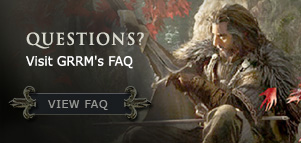
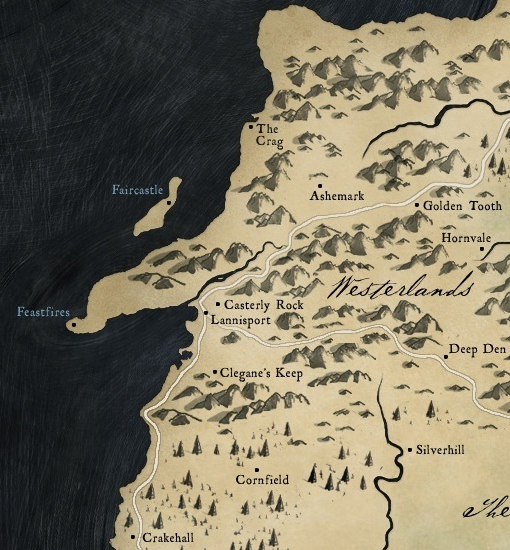
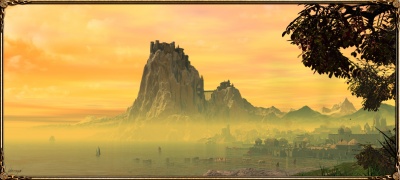
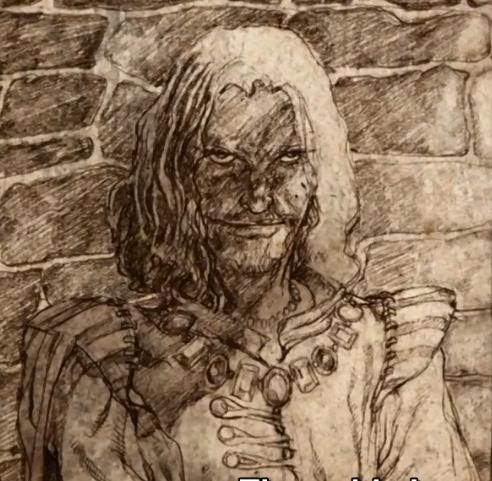
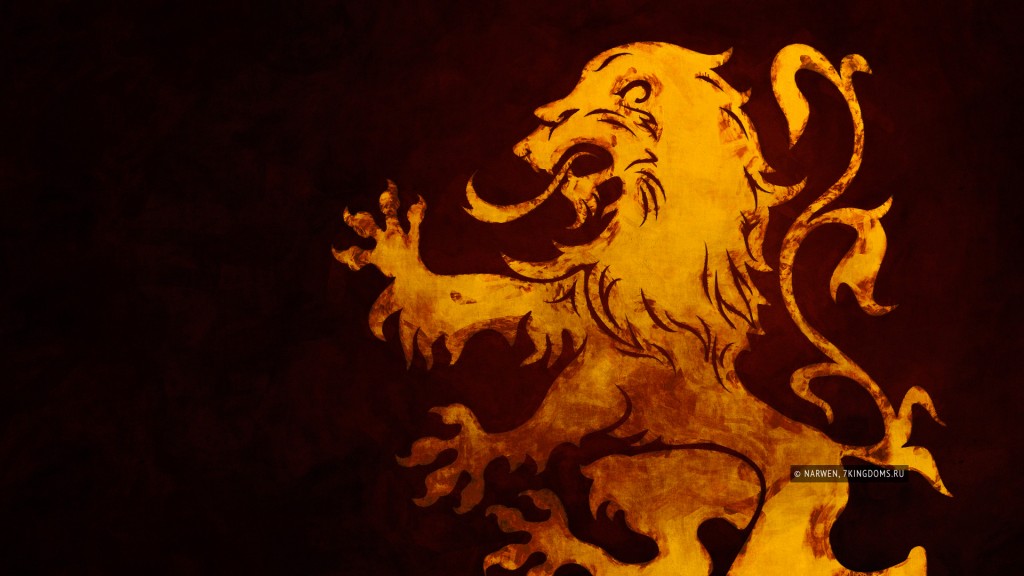
 The Lannister coastline lies closer to the Iron Islands than any other kingdom, and the wealth of Lannisport and its trade was a constant temptation to the reavers of those benighted isles. Wars between the westermen and the ironborn erupted every generation or so; even during periods of peace the ironmen would come raiding after wealth and salt wives. Fair Isle did help shield the coast further south; for this reason the Farmans became famous for their hatred of the ironborn.
The Lannister coastline lies closer to the Iron Islands than any other kingdom, and the wealth of Lannisport and its trade was a constant temptation to the reavers of those benighted isles. Wars between the westermen and the ironborn erupted every generation or so; even during periods of peace the ironmen would come raiding after wealth and salt wives. Fair Isle did help shield the coast further south; for this reason the Farmans became famous for their hatred of the ironborn.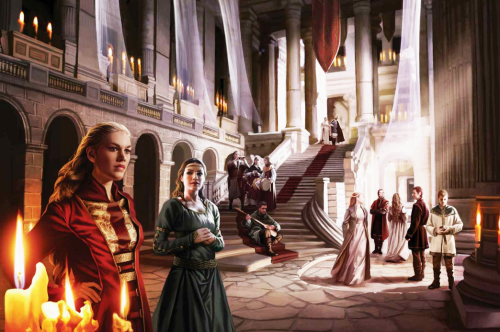
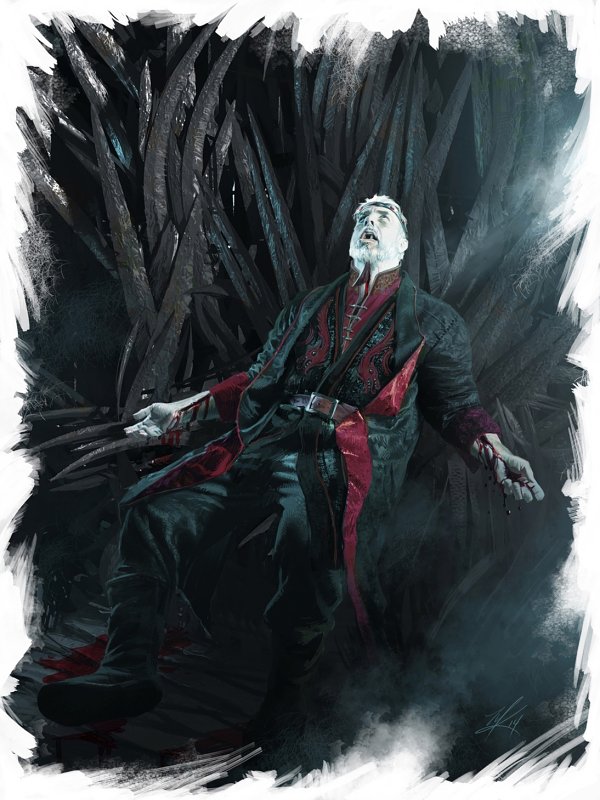 King Maegor’s death and King Jaehaerys’s coronation moved House Lannister closer to the Iron Throne, though the Velaryons, Arryns, Hightowers, Tullys, and Baratheons still eclipsed them in influence. Lord Tymond Lannister was present at the Great Council of 101 AC that decided the succession, famously arriving with a huge retinue of three hundred bannermen, men-at-arms, and servants… only to be outdone by Matthos Tyrell of Highgarden, who counted five hundred in his retinue. The Lannisters chose to side with Prince Viserys in the deliberations, a choice remembered and rewarded some years later, when Viserys ascended the Iron Throne and made Lord Jason Lannister’s twin brother Ser Tyland his master of ships. Later, Ser Tyland became master of coin for King Aegon II, and his close association with the Iron Throne and favored position at court brought his brother Lord Jason into the Dance of the Dragons on Aegon’s side.
King Maegor’s death and King Jaehaerys’s coronation moved House Lannister closer to the Iron Throne, though the Velaryons, Arryns, Hightowers, Tullys, and Baratheons still eclipsed them in influence. Lord Tymond Lannister was present at the Great Council of 101 AC that decided the succession, famously arriving with a huge retinue of three hundred bannermen, men-at-arms, and servants… only to be outdone by Matthos Tyrell of Highgarden, who counted five hundred in his retinue. The Lannisters chose to side with Prince Viserys in the deliberations, a choice remembered and rewarded some years later, when Viserys ascended the Iron Throne and made Lord Jason Lannister’s twin brother Ser Tyland his master of ships. Later, Ser Tyland became master of coin for King Aegon II, and his close association with the Iron Throne and favored position at court brought his brother Lord Jason into the Dance of the Dragons on Aegon’s side.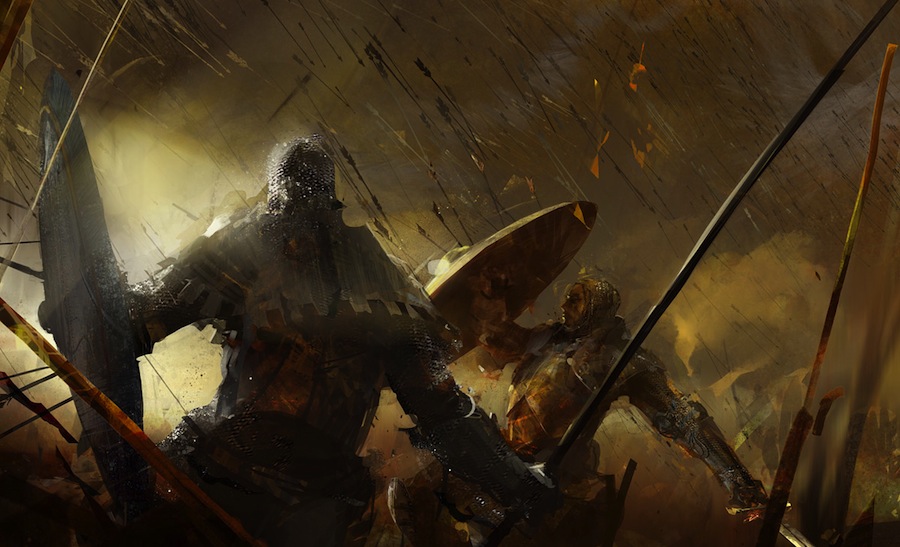
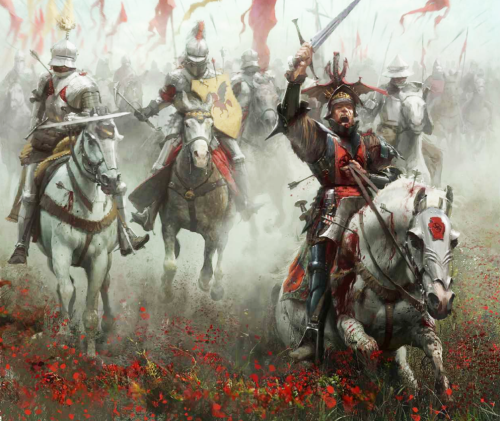 In the years that followed, the Lannisters stood with the Targaryens against Daemon Blackfyre, though the Black Dragon’s rebels won victories of note in the westerlands — especially at Lannisport and the Golden Tooth, where Ser Quentyn Ball, the hot-tempered knight renowned as Fireball, slew Lord Lefford and sent Lord Damon Lannister (later famed as the Grey Lion) into retreat.
In the years that followed, the Lannisters stood with the Targaryens against Daemon Blackfyre, though the Black Dragon’s rebels won victories of note in the westerlands — especially at Lannisport and the Golden Tooth, where Ser Quentyn Ball, the hot-tempered knight renowned as Fireball, slew Lord Lefford and sent Lord Damon Lannister (later famed as the Grey Lion) into retreat.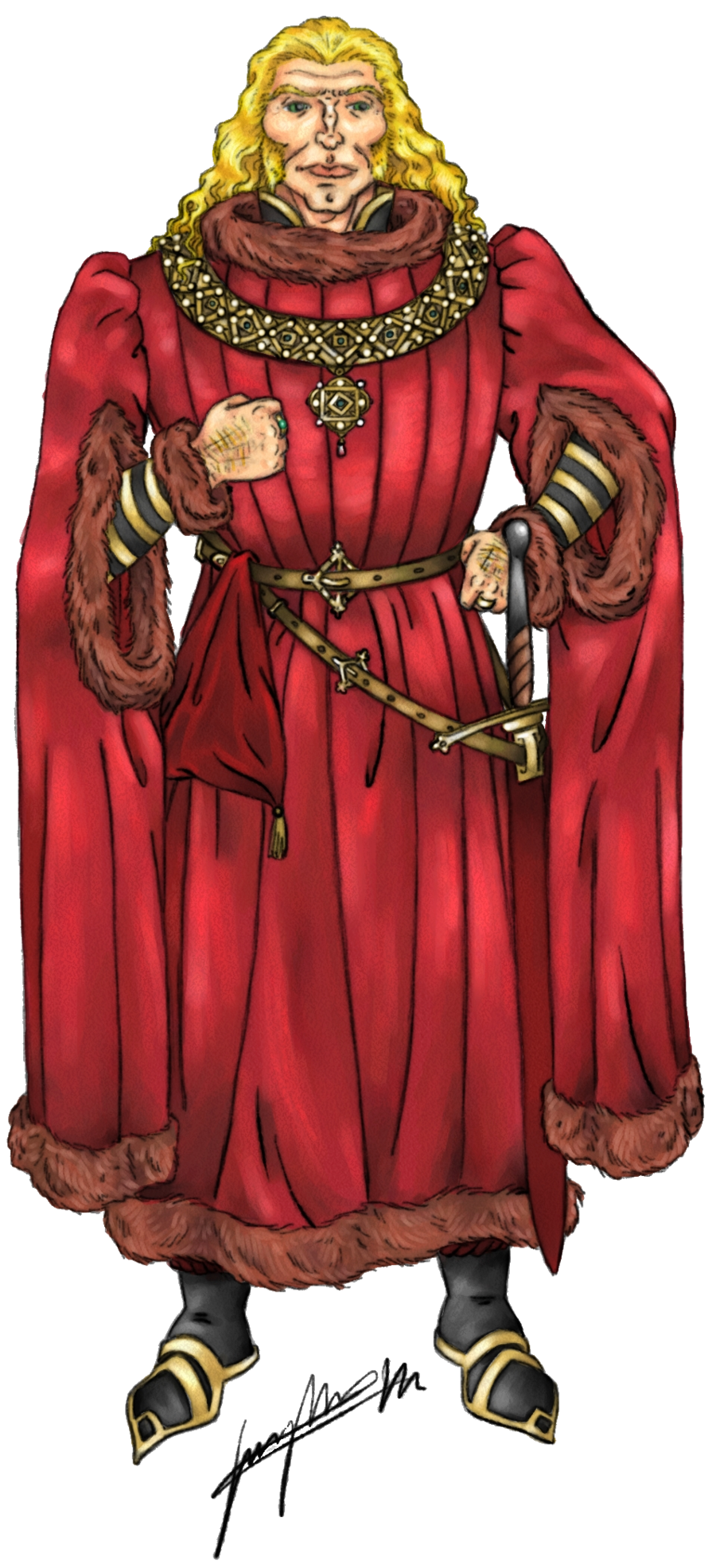 A genial man, known to be exceedingly clever, Gerold had served as regent for his young niece, but the suddenness of her death at such a tender age set tongues to wagging, and it was whispered widely in the west that Lady Cyrelle had been murdered by her uncle. The most common tale claimed that he had done the deed himself, smothering her with a pillow as she slept.
A genial man, known to be exceedingly clever, Gerold had served as regent for his young niece, but the suddenness of her death at such a tender age set tongues to wagging, and it was whispered widely in the west that Lady Cyrelle had been murdered by her uncle. The most common tale claimed that he had done the deed himself, smothering her with a pillow as she slept. Less well known, but no less baleful, are the dire effects the battle would have upon the history of the west. Tywald Lannister had long been betrothed to the Red Lion’s spirited young sister, Lady Ellyn. This strong-willed and hot-tempered maiden, who had for years anticipated one day being the Lady of Casterly Rock, was unwilling to forsake that dream. In the aftermath of her betrothed’s death, she persuaded his twin brother Tion to set aside his own betrothal to a daughter of Lord Rowan of Goldengrove and espouse her instead.
Less well known, but no less baleful, are the dire effects the battle would have upon the history of the west. Tywald Lannister had long been betrothed to the Red Lion’s spirited young sister, Lady Ellyn. This strong-willed and hot-tempered maiden, who had for years anticipated one day being the Lady of Casterly Rock, was unwilling to forsake that dream. In the aftermath of her betrothed’s death, she persuaded his twin brother Tion to set aside his own betrothal to a daughter of Lord Rowan of Goldengrove and espouse her instead.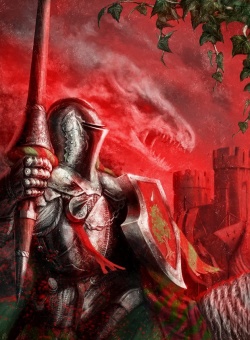 Lord Gerold’s aged fool, an acerbic hunchback called Lord Toad, was heard to say, “Lady Ellyn must surely be a sorceress, for she has made it rain inside the Rock all year.” It is a fool’s privilege to make mock of the mighty, even lords and princes. Yet so proud and quick to anger was Ellyn Reyne that when the jape reached her ears, she commanded that Lord Toad be whipped. And so he was, for Lord Gerold was too sick to interfere, and Ser Tion his heir loved his lady with a passion and refused her nought.
Lord Gerold’s aged fool, an acerbic hunchback called Lord Toad, was heard to say, “Lady Ellyn must surely be a sorceress, for she has made it rain inside the Rock all year.” It is a fool’s privilege to make mock of the mighty, even lords and princes. Yet so proud and quick to anger was Ellyn Reyne that when the jape reached her ears, she commanded that Lord Toad be whipped. And so he was, for Lord Gerold was too sick to interfere, and Ser Tion his heir loved his lady with a passion and refused her nought. That same year, however, Lady Jeyne answered with a son of her own. He was given the name Tywin, and legend claims that when his grandsire Lord Gerold ruffled the babe’s golden hair, the child bit his finger.
That same year, however, Lady Jeyne answered with a son of her own. He was given the name Tywin, and legend claims that when his grandsire Lord Gerold ruffled the babe’s golden hair, the child bit his finger.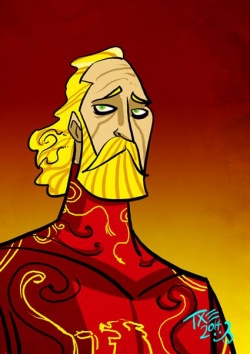 At feasts and balls, guests felt free to make mock of his lordship, even to his face. “Twisting the lion’s tail,” this was called, and young knights and even squires vied with one another to see who could twist the lion’s tail the hardest. No one laughed louder at these japes than Lord Tytos himself. “It was only a bit of fun,” he would tell his lady wife when she bristled at some insult. “He’s a good fellow now, I am sure that he meant nothing by it.”
At feasts and balls, guests felt free to make mock of his lordship, even to his face. “Twisting the lion’s tail,” this was called, and young knights and even squires vied with one another to see who could twist the lion’s tail the hardest. No one laughed louder at these japes than Lord Tytos himself. “It was only a bit of fun,” he would tell his lady wife when she bristled at some insult. “He’s a good fellow now, I am sure that he meant nothing by it.”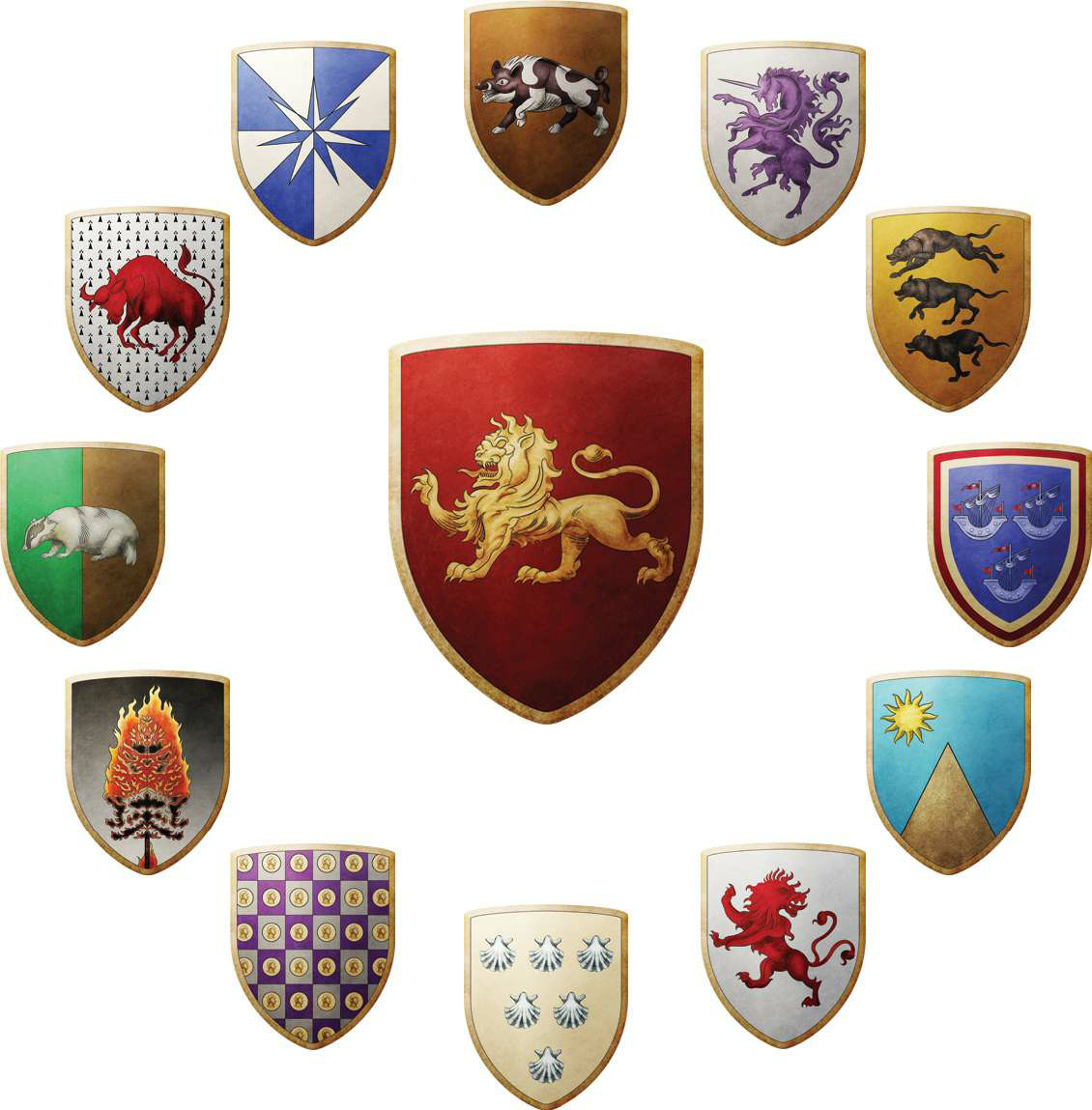 Old, rich, and powerful, the Reynes had prospered greatly from Lord Tytos’s misrule. Roger Reyne, the Red Lion, was widely feared for his skill at arms; many considered him the deadliest sword in the westerlands. His brother, Ser Reynard, was as charming and cunning as Ser Roger was swift and strong.
Old, rich, and powerful, the Reynes had prospered greatly from Lord Tytos’s misrule. Roger Reyne, the Red Lion, was widely feared for his skill at arms; many considered him the deadliest sword in the westerlands. His brother, Ser Reynard, was as charming and cunning as Ser Roger was swift and strong. The years that followed were as dismal as any in the long history of the westerlands. Even those houses that had hitherto remained leal to Casterly Rock went their own way now, for Lord Tytos had proved himself unwilling or unable to enforce justice or punish malefactors, even those who slew men in his service. A score of private wars broke out across the west, as rival lords strove for land, gold, and power. Outlaws, broken men, and robber knights became a plague upon the land. Genna Lannister was carried off to the Twins and married to a Frey. Apprentices rioted in Lannisport, Quellon Greyjoy and his ironmen smashed Lord Farman’s fleet and plundered Fair Isle, septons and begging brothers began to preach openly against House Lannister and “the Lord of Misrule,” and all the while the Reynes and Tarbecks grew ever richer and more powerful.
The years that followed were as dismal as any in the long history of the westerlands. Even those houses that had hitherto remained leal to Casterly Rock went their own way now, for Lord Tytos had proved himself unwilling or unable to enforce justice or punish malefactors, even those who slew men in his service. A score of private wars broke out across the west, as rival lords strove for land, gold, and power. Outlaws, broken men, and robber knights became a plague upon the land. Genna Lannister was carried off to the Twins and married to a Frey. Apprentices rioted in Lannisport, Quellon Greyjoy and his ironmen smashed Lord Farman’s fleet and plundered Fair Isle, septons and begging brothers began to preach openly against House Lannister and “the Lord of Misrule,” and all the while the Reynes and Tarbecks grew ever richer and more powerful.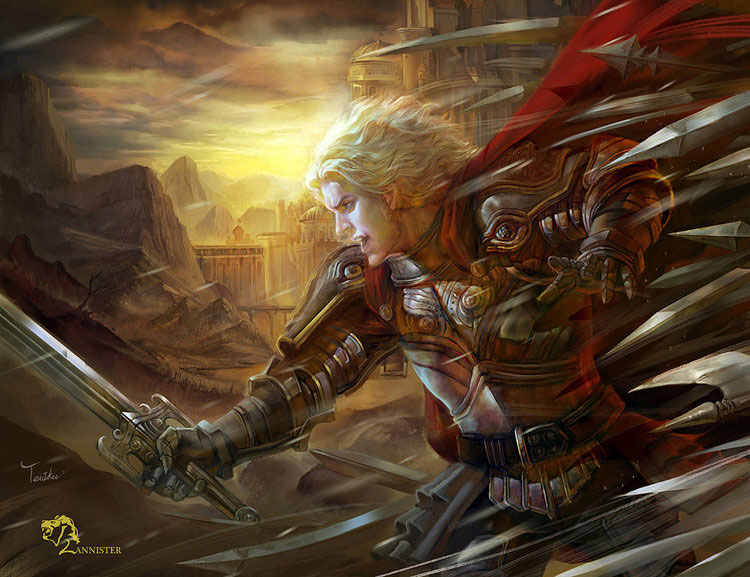 Determined to erase years of humiliation, he did not seek his lord father’s leave, nor even inform him of his intent, but rode forth himself with five hundred knights and three thousand men-at-arms and crossbowmen behind him. His brothers Kevan and Tygett went with him, one as a knight, one a squire. Lord Marbrand of Ashmark, Lord Prester of Feastfives, and a dozen lesser lords joined him on the march with their own levies, swelling his numbers.
Determined to erase years of humiliation, he did not seek his lord father’s leave, nor even inform him of his intent, but rode forth himself with five hundred knights and three thousand men-at-arms and crossbowmen behind him. His brothers Kevan and Tygett went with him, one as a knight, one a squire. Lord Marbrand of Ashmark, Lord Prester of Feastfives, and a dozen lesser lords joined him on the march with their own levies, swelling his numbers. When the last resistance had been quelled, Tywin Lannister ordered Tarbeck Hall put to the torch. The castle burned for a day and a night, until nought remained but a blackened shell.
When the last resistance had been quelled, Tywin Lannister ordered Tarbeck Hall put to the torch. The castle burned for a day and a night, until nought remained but a blackened shell.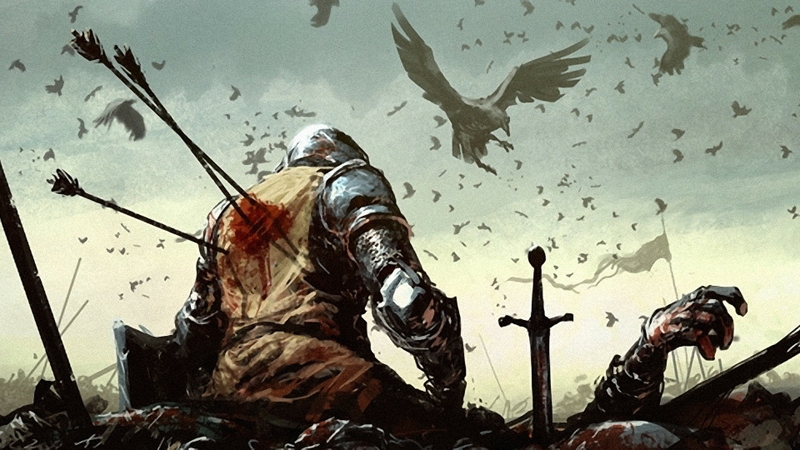
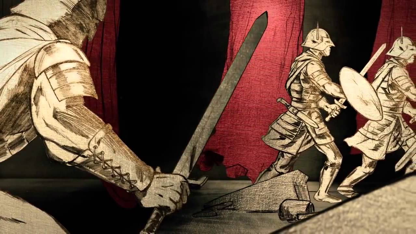

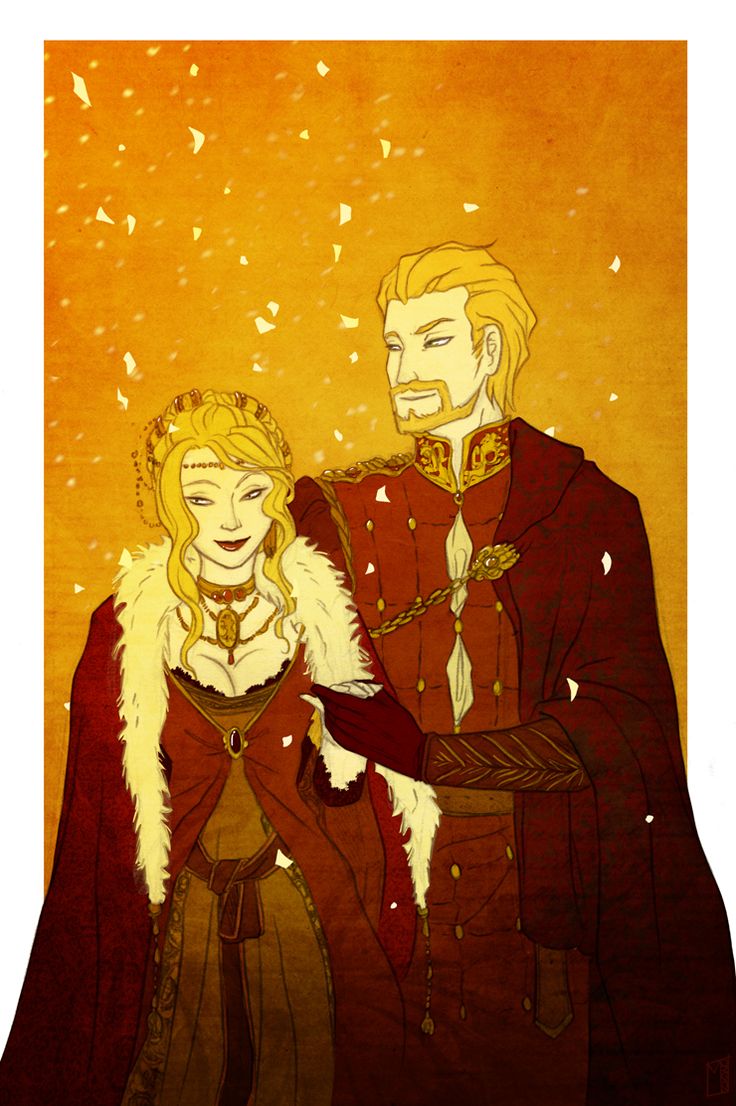 His cousin Lady Joanna, the daughter of Lord Tytos’s late brother Ser Jason, accompanied him to King’s Landing, to serve as a lady in waiting and companion to Queen Rhaella. A year later, she and Ser Tywin were wed in a lavish ceremony at the Great Sept of Baelor, with King Aerys himself presiding over the wedding feast and bedding.
His cousin Lady Joanna, the daughter of Lord Tytos’s late brother Ser Jason, accompanied him to King’s Landing, to serve as a lady in waiting and companion to Queen Rhaella. A year later, she and Ser Tywin were wed in a lavish ceremony at the Great Sept of Baelor, with King Aerys himself presiding over the wedding feast and bedding.